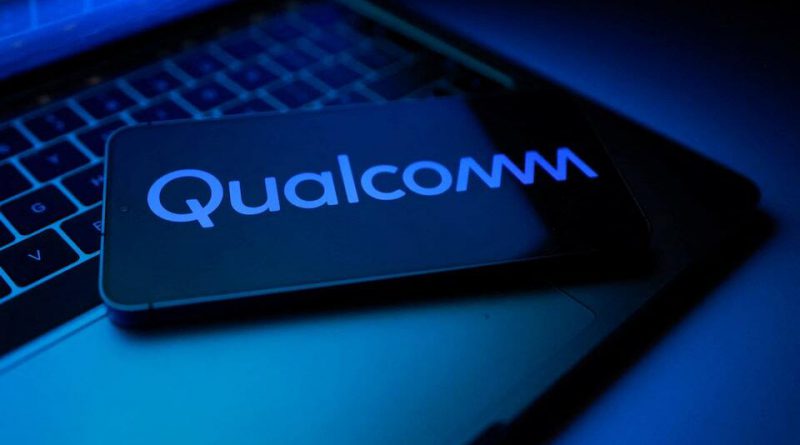Qualcomm Powers Ahead: New Arm v9 Chips Supercharge AI Performance
Qualcomm’s latest move to an advanced Arm architecture supercharges AI capabilities, promising faster, smarter chips for the next generation of devices.
Qualcomm has taken a major leap forward in the semiconductor race by adopting Arm Holdings’ latest v9 architecture for its flagship chips, a strategic move set to elevate AI performance and bolster its competitiveness against industry giants like Apple and MediaTek. The transition marks a significant milestone for Qualcomm, demonstrating its commitment to pushing the boundaries of chip design and AI-enabled processing, while also creating new growth opportunities for Arm, which licenses the underlying technology.
The new generation of Qualcomm chips leverages Arm v9’s enhanced features, designed to handle increasingly complex workloads in artificial intelligence, from natural language processing in chatbots to advanced image generation in creative applications. By integrating this architecture, Qualcomm aims to offer devices that are faster, more energy-efficient, and capable of supporting cutting-edge AI applications, meeting the growing demand from consumers and enterprise clients alike. Analysts suggest this move could position Qualcomm’s chips as a leading option for smartphones, PCs, and AI-powered devices, while boosting Arm’s licensing revenue.
For Qualcomm, the adoption of Arm v9 is not just a technical upgrade—it also resolves uncertainties stemming from last year’s legal tensions between the two companies. Despite a previous dispute over licensing terms, Qualcomm has reaffirmed its commitment to Arm’s technology, signaling stability and long-term collaboration in the semiconductor ecosystem. Arm v9, with its improved instruction set architecture, enables Qualcomm to selectively optimize chip design for customers’ needs, providing flexibility and efficiency that can accelerate innovation across platforms.
Industry insiders note that Qualcomm’s move is timely. Rivals like MediaTek and Apple have already embraced Arm v9 to enhance their own chip capabilities, and Qualcomm’s adoption ensures it remains competitive in both mobile and desktop markets. By combining Arm’s powerful architecture with Qualcomm’s in-house CPU design expertise, the company can craft processors that deliver both performance and tailored functionality for diverse devices, from premium smartphones to high-end PCs. This positions Qualcomm as a versatile player capable of responding to evolving industry demands while driving next-generation AI experiences.
The benefits of Arm v9 extend beyond AI performance. The architecture brings enhanced security features, improved machine learning acceleration, and better energy efficiency—key factors for mobile and edge computing devices where power and performance must be carefully balanced. Qualcomm’s new chips can thus offer longer battery life and higher throughput for AI tasks, creating tangible value for consumers and enterprise users alike.
Market analysts have praised Qualcomm’s decision, highlighting the strategic synergy between Qualcomm’s custom chip designs and Arm’s architecture. “This is a bold step that strengthens Qualcomm’s position in the AI and mobile computing markets,” said Jay Goldberg, senior analyst for semiconductors and electronics. “It not only improves performance but also reinforces Qualcomm’s ability to innovate independently while leveraging Arm’s proven architecture.”
The transition also signals a potential revenue boost for Arm. Licensing fees for the v9 architecture are higher than for previous versions, meaning that Qualcomm’s adoption could generate significant financial benefits for the company. With the semiconductor market increasingly focused on AI capabilities, both Qualcomm and Arm stand to gain from this mutually beneficial collaboration, reinforcing the importance of strategic partnerships in driving technological progress.
Beyond market competition, Qualcomm’s embrace of Arm v9 reflects a broader trend in the chip industry: the rapid integration of AI functionality across consumer electronics, enterprise systems, and edge devices. As AI applications proliferate, the demand for chips that can handle high-volume computations efficiently and securely has grown exponentially. Qualcomm’s new chips address this demand, enabling developers to create richer, more responsive AI applications while delivering smoother user experiences.
In essence, Qualcomm’s pivot to Arm v9 represents more than a technical update—it’s a statement of intent. The company is demonstrating leadership in AI-ready chip design, ensuring it stays ahead in an era defined by intelligent devices, connected ecosystems, and evolving user expectations. With the launch of these next-generation chips, Qualcomm is poised to strengthen its competitive edge, fuel innovation across multiple device categories, and solidify its reputation as a driver of the AI revolution in the semiconductor industry.
By embracing the latest Arm architecture, Qualcomm has combined cutting-edge AI performance, enhanced security, and energy efficiency in a package that promises to reshape the landscape of modern computing. For consumers, developers, and enterprise clients, the future looks faster, smarter, and more capable than ever—powered by Qualcomm’s innovation and Arm’s technology



